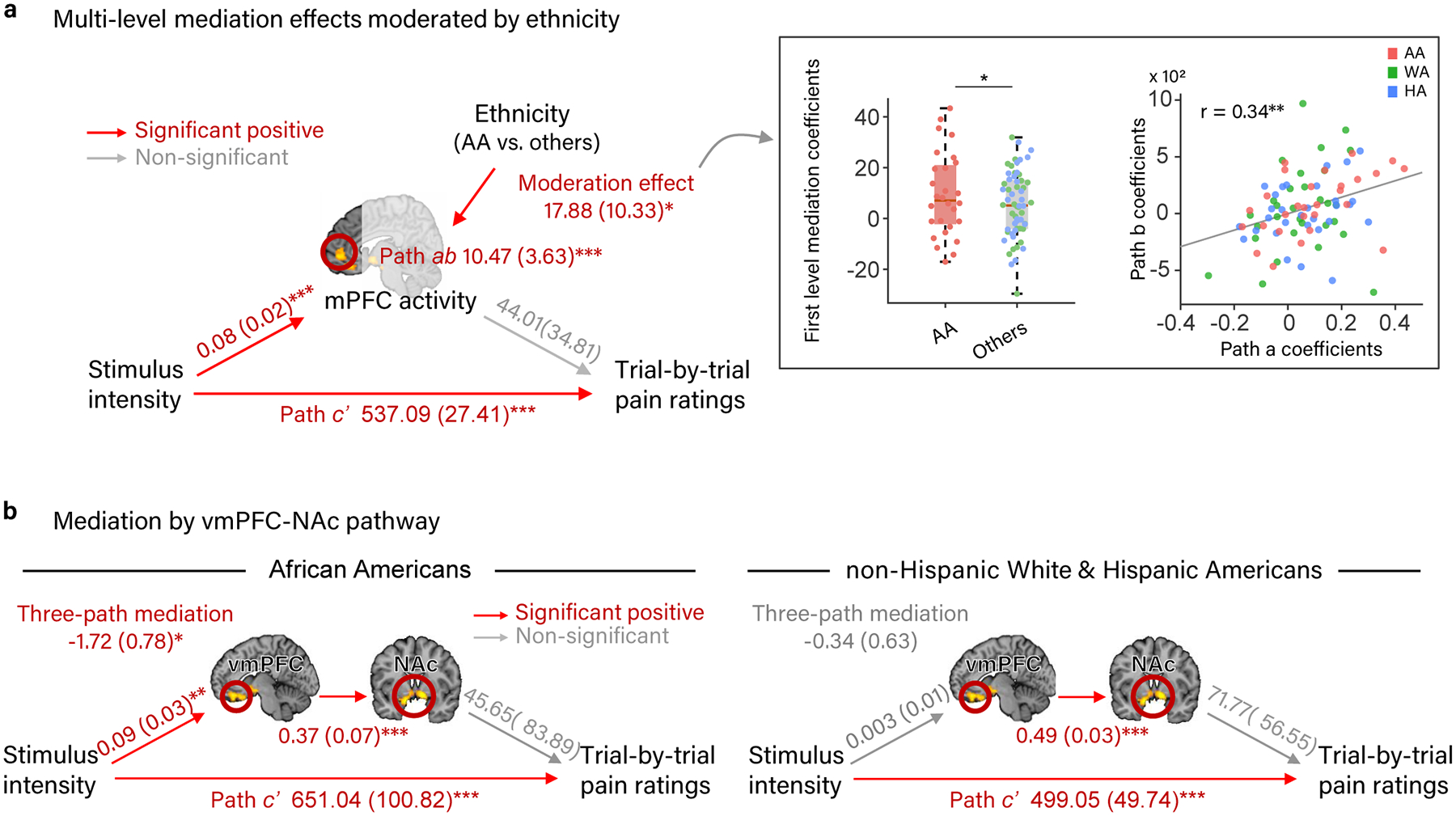Figure 4.

Mediation analyses showing that brain regions exhibiting a stronger dose-response effect of painful heat in AA participants in the whole-brain analysis mediate the relationship between painful stimulus intensity and pain rating differently in the AA group compared to the HA and WA groups. (a) Path diagram and statistics for moderated, multi-level mediation analysis between painful stimulus intensity, the mPFC region from the whole-brain analysis, and trial-by-trial pain rating, moderated by participant ethnicity [AA - (HA +WA)]. The mPFC mediated the relationship between painful stimulus intensity and pain rating to a greater degree in the AA groups than in the HA and WA groups. (b) Path diagrams and statistics for three-path, multi-level mediation analyses between painful stimulus intensity, connectivity between the vmPFC and NAc regions from the whole-brain analysis, and trial-by-trial pain rating in the AA and the non-AA (WA + HA) groups separately. Connectivity between the vmPFC and NAc mediated the relationship between painful stimulus intensity and pain rating in the AA group only. Path coefficients are listed for each path with standard errors in parentheses. Data are from 88 participants.
